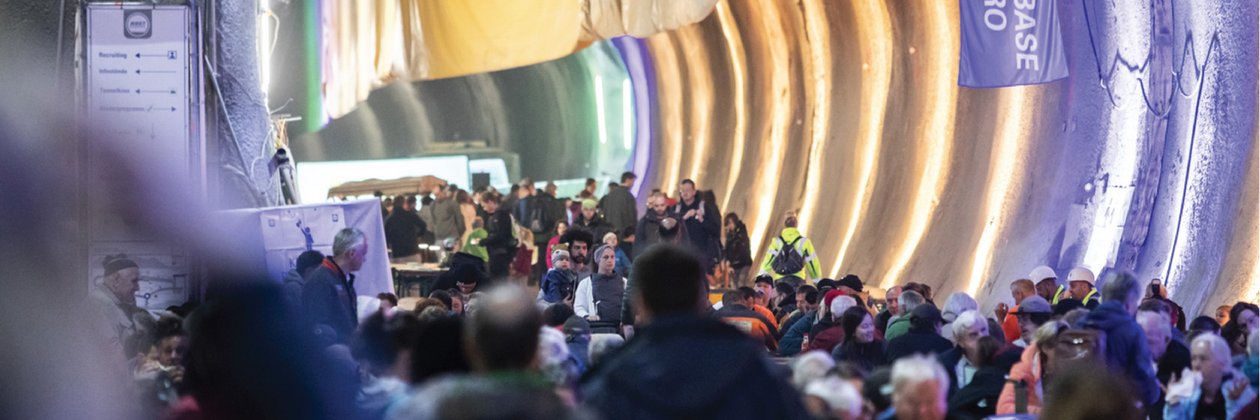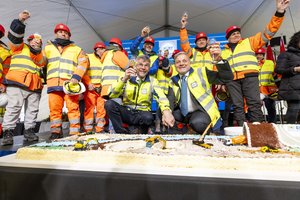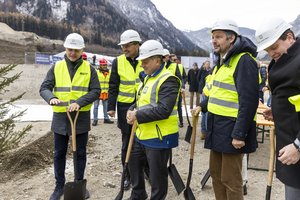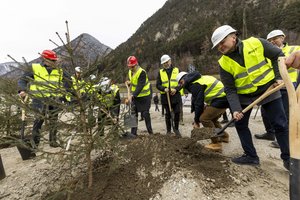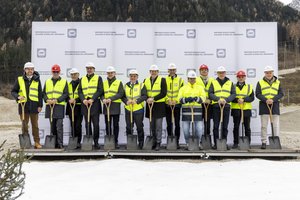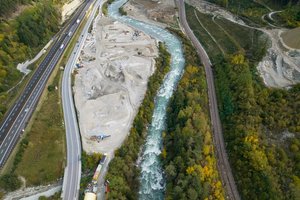Although the actual tunnel section was relatively short, the Isarco Underpass construction lot was one of the most technically demanding construction lots of the Brenner Base Tunnel. The narrow Isarco valley posed several significant engineering challenges. These included the crossing of the A22 motorway and the SS12 state road, as well as a series of open-air works including soil consolidation in preparation for the excavation of the tunnels. A crucial aspect of this construction site is the excavation of several tunnel sections running under the Isarco River.
In order to excavate under the river using the technique of soil consolidation by freezing, two shafts were built on each side of the river. Ground freezing is an environmentally friendly technique and it was chosen so that the Isarco could continue to flow in its original riverbed, preserving the flora and fauna in the area. Following the completion of the construction work on the future railway tunnels, on 8 August, landscaping work began on the open-air part of the construction site. Once these works are completed, the areas affected by the project will be landscaped, using tree species that can thrive in the local climate, with the aim of restoring the area to its original state.
For the two members of BBT SE’s Board of Directors, Gilberto Cardola and Martin Gradnitzer, the completion of the works in the Isarco Underpass lot is a turning point for the BBT project: “With the completion of the work in the southernmost lot of the Brenner Base Tunnel, we have reached a new and important milestone, which allows us to look to the future with even greater confidence.” Compared to other construction lots of the BBT project, the work on the Isarco Underpass lot was clearly visible above ground: hence the need to restore the construction site area to its original state. “Especially the work on the southern portal of Fortezza, where trains will pass in future, is quite obvious”, said both members of the Board of Directors.
Alessandro Marottoli, Project Director for BBT SE for the Isarco River Underpass expressed his satisfaction by saying: “I would especially like to thank the entire project team of the Isarco Underpass construction site for their efforts over the past eight years, and the employees of BBT SE in the planning, geology and administrative departments who have contributed decisively to the achievement of this important goal.
According to the European Coordinator of the Scandinavian-Mediterranean Corridor Pat Cox, the Isarco Underpass is “an extraordinary example of engineering innovation. Despite the technical complexities, the BBT SE team was able to overcome this challenge brilliantly.”
According to Edoardo Rixi, Deputy Minister for Infrastructure and Transport, "major works such as the Brenner Base Tunnel are an asset for the entire community, to be passed on to future generations. It is great works that give people access to wider opportunities and bring the European continent closer together.”
Arno Kompatscher, President of the Autonomous Province of Bolzano, emphasised that this work is meant to create links and overcome barriers, 'in a distinctly European perspective. All this without forgetting the specific characteristics of the Isarco valley, as can be seen from the care taken on the landscaping work.”
René Zumtobel, Tyrolean Councillor for Mobility, also emphasised the international dimension of this project. Said the councillor, “you are not just building a railway infrastructure, you are connecting Europe. With the completion of the Isarco Underpass lot, a further step has been taken towards a major goal, namely the shift of traffic from road to rail.”
The highlight of the event on 4 December, which also celebrates St Barbara, patron saint of miners, was the planting of four spruce trees in the construction site area. This symbolically represents the beginning of the ‘renaturation’ process, during which the entire site will be restored to its original state, for the benefit of the entire population living in the project area.

